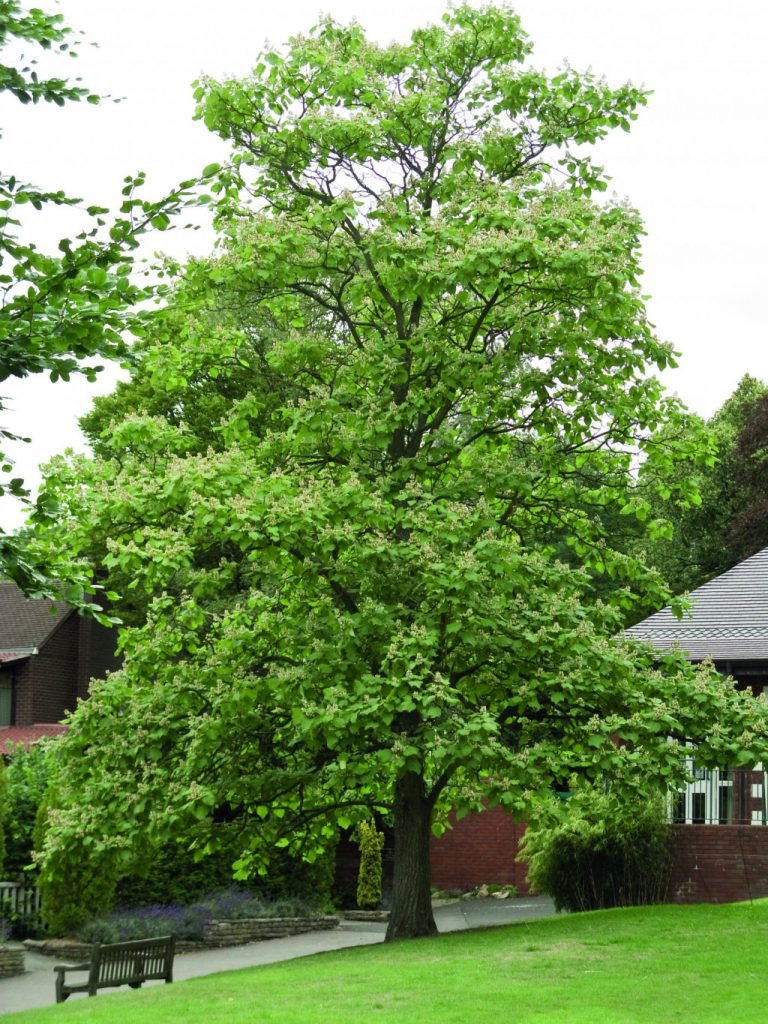Climate change is very visible in the Alpine Space. Temperature extremes have been increasing significantly in recent decades. The number of hot days and tropical nights is increasing, while the number of frosty days is decreasing. The effects of climate change cannot be overlooked in nature either: For example, glaciers are receding dramatically and the rise in temperature in lakes and rivers is affecting various fish species. In the forest, the rise of the tree line in alpine regions and the increased occurrence of pests, among other things, are clear evidence of climate change.

Projections show that climate change will have a considerable impact on trees in forests by altering the frequency, intensity, duration, and timing of factors including precipitation, drought, non-native species, insect and pathogen outbreaks, wind and ice damage, and gravitational mass movement. Trees are believed to have limited adaptive capacity to respond to extreme temperatures and rapid climatic and environmental change. Furthermore, climate change is expected to be one of the main future causes of biodiversity loss worldwide, and research shows that the extinction of species from numerous taxa will follow. It is by now widely accepted that climate change is a global phenomenon, that CO2 emissions are the main cause of climate change, and that deforestation is currently responsible for almost 20% of the annual global emissions of CO2.

The impacts of climate change are expected to be particularly severe in the Alpine region. Alpine forests could be among the winners of climate change. In the mountains, it actually gets colder earlier in the year, which stops tree growth. The warmer temperatures that climate change is predicted to bring will therefore extend the growth period for mountain forests, provided that sufficient nutrients and water are available. In the mountains, the treeline shifts upward. The tree species at the upper tree line will expand their range further upwards. At the lower distribution limit, it will become too dry for many native tree species. On average, the temperature decrease is 0.65 °C per hundred meters of rising sea level. With the warming of 2.3 °C, for example, the temperatures at 750 meters above sea level in the future will be those that exist today at 400 meters above sea level. This means that the optimal growing conditions for a tree species will shift upward by about 350 meters above sea level.

Adaptation requirements for forests

Non-native trees (NNT) are sometimes viewed as part of a solution for adapting forests to future climate conditions. Bioclimatic envelope modeling can help to provide a first assessment of NNT viability under expected conditions. Subsequently, factors such as biotic interactions, soil conditions, extreme sites, evolutionary change, dispersal ability, and adaptation potential of native tree species to future climatic conditions must also be appropriately considered, along with the fact that large areas of forests in the Alpine space are secondary forests and do not reflect the potential natural distribution. Since no significant effort has been made during the past two decades to mitigate habitat loss and protect biodiversity, it is likely that more areas will need to be set aside for conservation to increase the resilience of forests to stochastic climatic events. Safeguarding and increasing biodiversity is seen as an important step in boosting the resilience of Alpine space forests to future climatic conditions. The introduction and use of NNT will play an ambiguous role in this context since their introduction in conservation areas can have undesirable and unintended effects on the resilience of habitats. Potential positive use cases, on the other hand, can support the stabilization of ecologically compromised areas and ensure a consistent raw material supply under future climatic conditions.
The forest-based sector will likely have to adapt economically due to changes in requirements for suitable trees, which will lead to a decline in softwood available for further processing. This in turn will create a need for research and development regarding hardwood processing technologies, as well as adaptation to a wider variety of tree species, in general, to optimally use and allocate the available biomass supply. In this context, adaptation requirements in the Alpine space include the cultivation of suitable tree species from similar habitats in climatically appropriate regions (i.e., assisted migration), respectively the introduction of NNT. Regarding the selection of trees for future use, the effects of environmental factors on tree resistance to insects (in direction and intensity) seem to depend on available resources, the intensity of stress supported by the individual tree species (i.e., its resilience), and the nature of specific insect guilds (i.e., groups of species that exploit the same resource in related ways) (Lieutier, 2006). Important steps to consider in terms of forest management are, therefore:
• Investigation of potential climate-induced habitat dynamics and efforts to designate more areas for conservation as well as some for intensification.
• Careful examination of current and future climatic suitability of currently employed propagation material.
• Investigation of ecosystem risks, benefits, and trade-offs of introducing established species from different provenances vs. NNT.
• Analysis of potential habitat effects caused by the introduction of NNT.
• Ensuring that prerequisites and intended targets are met in forests available for wood supply as well as conservation areas.
Adaptation requirements for urban trees

Non-native trees are sometimes viewed as part of a solution for adapting urban green spaces to future climate conditions. Bioclimatic envelope modeling can help to provide an initial assessment of non-native tree viability under future climatic circumstances. Subsequently, factors such as biotic interactions, soil conditions, extreme sites, evolutionary change, and the dispersal ability and adaptation potential of native tree species to future climatic conditions need to be adequately considered, as does the fact that most trees in urban green spaces are not of species that would naturally occur in the region.
Urban trees are thought to be more vulnerable to climate change due to their more extreme climatic environment, thereby necessitating adaptive measures with regard to tree selection. This increasingly makes non-native trees potential candidates for urban applications in the future. In general, climatic variability is considered to have more severe effects on trees than steady but small changes. The most critical parameter for urban trees seems to be drought tolerant. Depending on site conditions, tolerance to waterlogging and shade can also be important. High tolerance to one of these parameters generally tends to correlate with lower tolerance to at least one of the others.
Depending on the location, greater uniformity of trees may be desirable (e.g., for streets or boulevards), whereas an ecological focus may necessitate the selection of non-traditional species to promote a higher level of biodiversity. According to Brune, taking crown shapes and sizes, growth rates, and potential life spans into account is likewise important. Greater diversity can make urban trees as a group more resilient to pests than uniform cloned trees. Fast-growing non-native plants may have less dense tissues and therefore grow and incorporate carbon in their tissues faster than native plants. But they also decompose faster, accelerating carbon cycling and releasing carbon back into the atmosphere much more quickly. On the other hand, faster decomposition can increase biodiversity by increasing the abundance of herbivorous insects and soil microorganisms feeding on live and decaying plant tissue. Contrary to the introduction of non-native trees in forest ecosystems, where caution is advised with a view to potential long-term adverse effects on carbon and nutrient cycling as well as on established species in the Alpine space, introduction in urban spaces seems to be less critical due to the long history of the selection and use of non-native trees in urban areas.
In summary, the following steps are necessary for managing trees in the urban environment:
- Selection of appropriate species for current and future climate conditions
- Comprehensive site assessment
- Improvement of site conditions to ensure successful tree establishment
- Use of seedlings with suitable provenance and quality
- Long-term strategy for adequate planning and management

